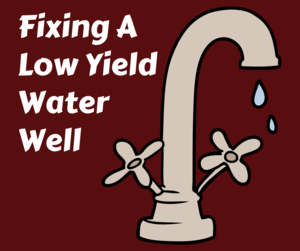CALL TODAY 1-800-441-6281
CALL TODAY 1-800-441-6281

Treating Nitrate and Nitrite in Your Drinking Water
Nitrate and nitrite are two types of nitrogen found in drinking water. Although safe in small doses, high levels of nitrate and nitrite can make people sick. Because of this, the Massachusetts Department of Environmental Protection has set limits on the amount of nitrate and nitrite may be present in drinking water. In New Hampshire, nitrate and nitrite limits follow the federal guidelines. Elevated levels of nitrate and nitrite are not common in New England, but some homes, depending where they are located, are at more risk for contamination.
How does nitrate and nitrite get into my water?
Nitrate is a compound used in fertilizer and should be considered as a possible contaminant if you live on or next to a farm. Nitrite and nitrate can originate from flooded sewers or private septic systems, fertilizers and other agricultural runoff. Nitrate can also come from some construction activities, such as blasting. The presence of nitrate in your well depends on the geology of the land in your neighborhood.
If you find the source of the elevated levels of nitrate or nitrite is from a sewer or septic system, you should also consider testing for bacteria that could cause other health problems.
If it’s uncommon, why treat for nitrate or nitrite?
Nitrates are found in some foods and in low doses are not harmful, however, ingesting larger amounts can be a health concern, especially in infants. Children under 6 months can become fatally ill ingesting even a small amount of these forms of nitrogen. It causes shortness of breath and a blueness of the skin as a result of the body’s inability to process oxygen. This is why the EPA has established maximum contaminant levels of 10 milligrams per liter for nitrate and 1 milligram per liter for nitrate.
How do I remove nitrate and nitrite from my water?
Homeowners should first consider the source of the nitrate and nitrite and whether there is a way to reduce the amount of contaminants, such as fixing a broken septic or sewer system. If this is not an option, homeowners can also consider digging a new well that draws water from a different level of the soil and bedrock. For example, a home with a shallow well that has elevated levels or nitrate or nitrite may be able to draw clean water from a newly drilled bedrock well.
If neither of these solutions solve the problem, you should install a water treatment system.
In a reverse osmosis filtration system, water flows through a membrane, filtering out some of the molecules within the water, including nitrate and nitrite. These molecules, plus some water, are flushed into your home’s wastewater system. The treated water is stored in a small storage tank until needed. Solids in the water can sometimes clog the membrane, so a sediment prefilter should also be installed. When used to filter only the home’s drinking water at the point-of-use, this is the most economical option.
A water softener is typically used to treat hard water, but it can also remove nitrate and nitrite. Water softeners use an ion exchange process, during which minerals are replaced with sodium. These compounds are then removed from the softener filtering resin through a backwashing process. Water softeners filter the whole home’s water supply as it enters the house, not just the drinking and cooking water. If you are considering this option, you will need nitrate and nitrite specific resin to effectively remove the contaminant.
A distillation system, which can be installed either under the sink or counter, uses temperature change to evaporate and recondense clean water. Inorganic minerals, such as nitrite and nitrate do not usually transfer into the condensed water, but some organic contaminants will. These systems can increase a home’s energy costs.

